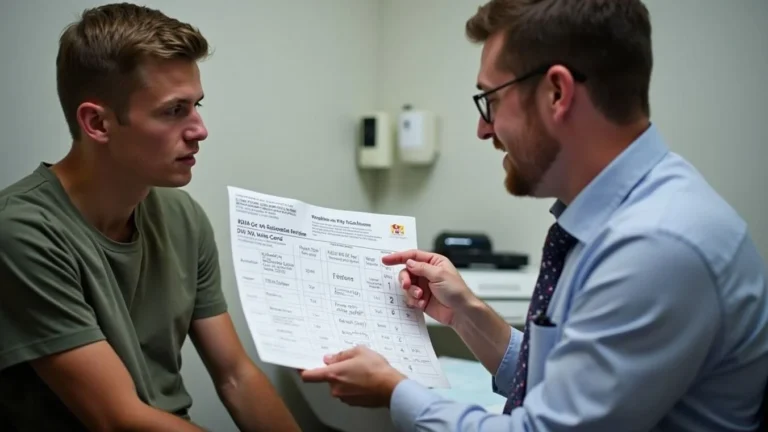Preventive care, often referred to as the cornerstone of modern healthcare, plays a vital role in enhancing long-term health outcomes while reducing the overall costs of medical treatment. Preventive measures focus on the early detection of potential health issues, minimizing the risk of disease, and promoting healthy lifestyles. While the benefits of preventive care are well-documented, the challenge lies in understanding and implementing the key factors that can lead to real, measurable results. These factors encompass a broad range of influences—ranging from individual behavior to societal systems, healthcare accessibility, and public policy. To truly achieve the intended benefits of preventive care, these elements must align harmoniously.
1. Public Awareness and Education
One of the most significant factors influencing the success of preventive care is public awareness. If individuals are unaware of the importance of preventive measures, or the tools available to them, they are less likely to take proactive steps in maintaining their health. Effective education campaigns are essential in changing mindsets and informing the public about the value of regular health screenings, vaccinations, and lifestyle changes that reduce the risk of chronic conditions.
Take, for instance, the campaign surrounding cancer screenings. In many regions, the introduction of awareness programs for breast cancer and colorectal cancer has led to increased participation in screening programs, directly influencing early detection and a reduction in mortality rates. Similarly, campaigns to educate about smoking cessation have yielded real results in reducing the incidence of lung cancer and heart disease, with tangible improvements in overall public health.
2. Access to Healthcare Services
Access to quality healthcare is a cornerstone of preventive care. People who do not have easy access to healthcare facilities are less likely to benefit from preventive measures such as regular checkups, vaccinations, or early screening tests. The disparities in healthcare access can be observed particularly in rural areas or among economically disadvantaged populations.
For preventive care to be effective, it must be available to everyone, irrespective of their socioeconomic status or geographic location. A critical example of this is the success of vaccination programs in reducing infectious diseases, such as polio and measles. In countries with comprehensive vaccination programs, the incidence of these diseases has plummeted, leading to longer life expectancies and reduced healthcare costs.
Moreover, health systems that offer affordable preventive services, including immunizations, screenings for cancers, diabetes management, and mental health services, foster long-term wellbeing. Countries with a strong infrastructure for preventive care, like Finland and Japan, demonstrate that when healthcare systems prioritize early detection and maintenance, the results are extraordinary in terms of life expectancy, reduced disability, and overall quality of life.
3. Socioeconomic Factors and Health Equity
Socioeconomic status (SES) significantly impacts an individual’s ability to engage in preventive care. Those with higher income levels typically have better access to healthcare, healthier living environments, and more time to invest in personal well-being. In contrast, those in lower income brackets often face barriers such as limited access to medical care, a lack of health insurance, and chronic stress, which can all hinder the adoption of preventive health measures.
The real impact of this inequality is visible in the prevalence of chronic conditions such as hypertension, diabetes, and heart disease, which are more common in lower-income groups. Addressing these disparities requires more than just health education—it necessitates targeted public health policies that prioritize accessibility and affordability. Community health initiatives that bring preventive care to underserved areas can yield significant improvements, such as mobile health clinics, subsidized screening programs, and mental health resources for low-income families.
4. Lifestyle Choices and Personal Responsibility
Personal responsibility is a significant factor in the effectiveness of preventive care. While healthcare systems and government policies play a role, individual behaviors are often the deciding factor in determining health outcomes. Healthy lifestyle choices, including regular physical activity, balanced nutrition, adequate sleep, and mental health maintenance, are essential for the prevention of numerous diseases, including obesity, cardiovascular disease, and type 2 diabetes.
In fact, studies have shown that adopting a healthy lifestyle can prevent more than 80% of heart disease and diabetes cases, underscoring the importance of personal decision-making. Public health campaigns that focus on promoting exercise, healthy eating, smoking cessation, and mental wellness have proven effective in changing individual behaviors and reducing the prevalence of preventable diseases.
A key example of this is the global push to reduce tobacco consumption. As smoking rates decrease due to stronger public health campaigns, smoking-related illnesses such as lung cancer and emphysema have also seen a decline. This real, measurable outcome emphasizes the power of preventive care that stems from individual commitment and behavior modification.
5. Technological Advancements in Healthcare
Technology is reshaping the landscape of preventive care by providing innovative tools for early detection, diagnosis, and treatment. Advances in telemedicine, wearable health devices, and artificial intelligence have made it easier to monitor individual health and detect abnormalities before they develop into serious conditions.
Wearable devices like Fitbit, Apple Watch, or even smartwatches that monitor heart rate, sleep patterns, and physical activity levels can provide real-time data that alerts individuals to potential health concerns. For instance, some devices now feature heart rhythm detection, which can notify users about potential arrhythmias, allowing them to seek medical attention before the condition becomes life-threatening. These innovations not only make it easier for people to take charge of their health but also enable healthcare providers to engage in proactive care, potentially preventing chronic conditions like heart disease or stroke.
6. Government Policy and Health Systems
Government policy is perhaps the most powerful lever for influencing preventive care on a large scale. Policies that encourage preventive services—such as free or subsidized health screenings, smoking cessation programs, and initiatives that promote physical activity—can have a significant impact on public health.
For example, the Affordable Care Act (ACA) in the United States expanded access to preventive care by requiring insurance providers to cover screenings, vaccinations, and counseling services at no additional cost to the patient. This policy has led to an increase in the uptake of preventive services and a corresponding decrease in the long-term costs associated with treating advanced diseases.
Additionally, public health initiatives that encourage healthier environmental factors—such as clean air, better access to healthy food, and safe outdoor spaces for physical activity—can create a community-wide culture of health, making preventive care a shared societal value.
7. Collaboration Between Healthcare Providers and Communities
Lastly, the collaboration between healthcare providers and local communities is essential to the success of preventive care. Healthcare professionals must engage with the communities they serve to identify health risks, create tailored programs, and offer consistent support. These partnerships often lead to better health outcomes by building trust, encouraging consistent participation, and fostering a sense of collective responsibility.
Successful community health programs, such as those offering free screenings or wellness workshops, demonstrate the value of healthcare providers working closely with local organizations, schools, and workplaces to improve overall health literacy and encourage healthier behaviors.
Conclusion
Preventive care is not merely about reacting to illness; it’s about fostering a culture of proactive health management that benefits individuals and society as a whole. Public awareness, access to healthcare, socioeconomic factors, lifestyle choices, technological innovation, and supportive government policies all play significant roles in making preventive care effective and impactful. By addressing these key factors and focusing on long-term, collaborative efforts, we can ensure that preventive care yields real, measurable results, ultimately leading to a healthier, more resilient population.















